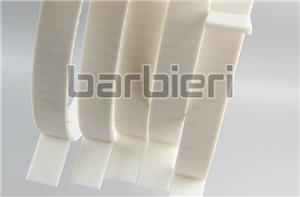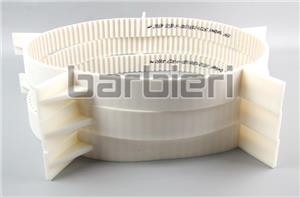The difference between timing pulley and gears, when to choose timing pulley? When to choose gears?
Timing pulley, like gears, are meshing transmissions, but there are significant differences between timing pulley and gears in terms of structure, working principle and application field.
The types of timing pulley can be divided into:
Because the timing pulley is used in conjunction with the timing belt, there is a timing pulley with a corresponding tooth type for any timing belt with a tooth type. The timing belt tooth type can be divided into: AT type, T type, HTD type, RPP type, STD type, and other types. (For details, see: Classification and specification of timing belt tooth type) It needs to be customized according to the tooth type and the actual size specifications used.
1. Transmission mode: The motion and torque are transmitted through the meshing between the timing belt and the timing pulley. The teeth on the timing belt correspond to the tooth grooves on the timing pulley. It consists of a timing belt and at least two timing pulleys.
2. Contact mode: The teeth of the timing belt mesh with the tooth grooves of the timing pulley.
3. Timing belt transmission principle: The meshing between the timing belt and the timing pulley transmits motion and torque, and the transmission ratio is determined by the gear ratio of the timing pulley.
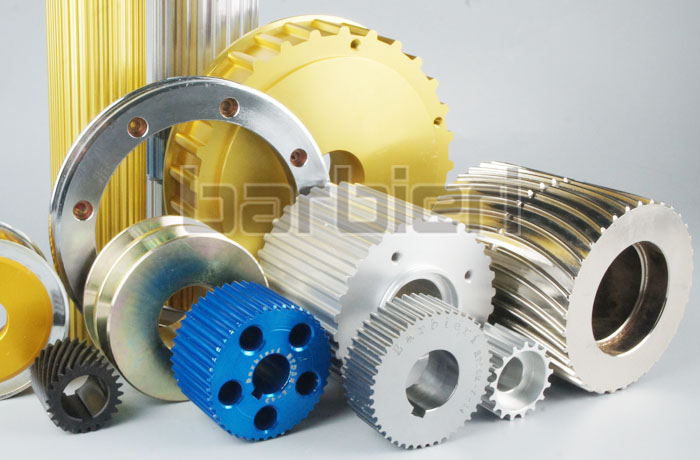
There are many types of gears, usually divided into three types according to the gear axiality: parallel axis, intersecting axis, and staggered axis.
Parallel axis gears: spur gears, helical gears, internal gears, racks and helical racks, etc.
Intersecting axis gears: straight bevel gears, spiral bevel gears, zero-degree bevel gears, etc.
Staggered axis gears: staggered axis helical gears, worm gears, hypoid gears, etc.
1. Transmission mode: It consists of two or more meshing gears, and the motion and torque are transmitted through the meshing between the gears.
2. Contact mode: The tooth surfaces of the gears are in direct contact.
3. Gear transmission principle: Motion and torque are transmitted by the meshing of the teeth between the gears, and the rotation ratio is determined by the gear ratio.
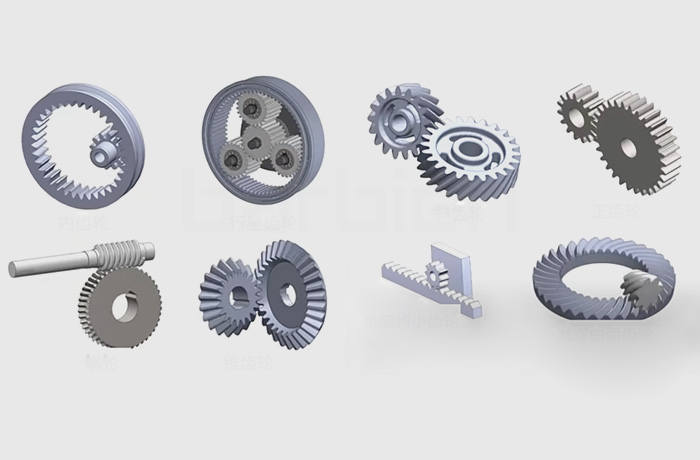
Since the gears can be interlocked with each other, one gear drives another gear to transmit power. However, if the two gears are separated, a chain (chain drive) or a track (track drive) can also be used to drive the rotation of the two gears to transmit the motion torque. Belt drive can meet the distance requirements, but the load requirements and transmission ratio accuracy are not as good as timing belt drive.
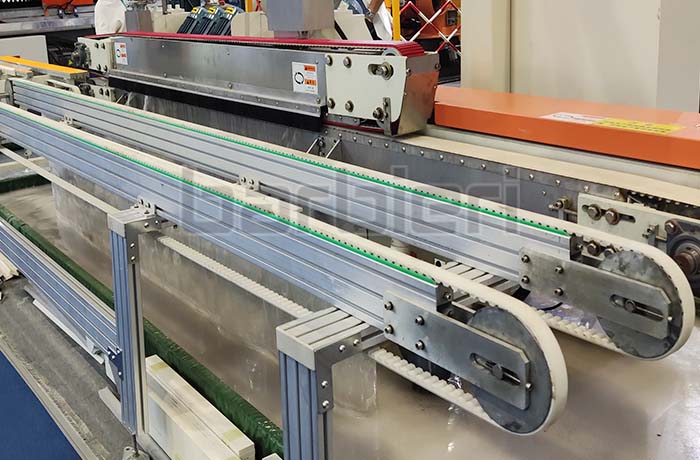
Timing pulleys are meshing transmissions like gears, but timing belt drive is more suitable for long-distance transmission. Timing belt drive is a new type of transmission method that combines the advantages of chain drive and gear drive, but the accuracy and load capacity are not as high as gear drive. Gear drive and timing belt drive each have their own advantages. The specific choice of which transmission method needs to be determined according to the requirements of the specific application scenario.
- Polyurethane Timing Belt
- Annular Timing Belt
- Open-end Timing Belts
- AT-series Timing Belts
- T-series Timing Belts
- STD-series Timing Belts
- HTD-series Timing Belts
- RPP-series Timing Belts
- TT5-series Timing Belts
- Imperial Series Timing Belt
- Supported Polyurethane Flat Belt Series
- Double Sided Timing Belt
- ATN-series Timing Belts
- Timing Belt With Backing
- Timing Belt With Fabric
- Timing Belt Punching
- Polyurethane Self-tracking Timing Belt
- Polyurethane Belt With Profile
- Special Processing Timing Belt


